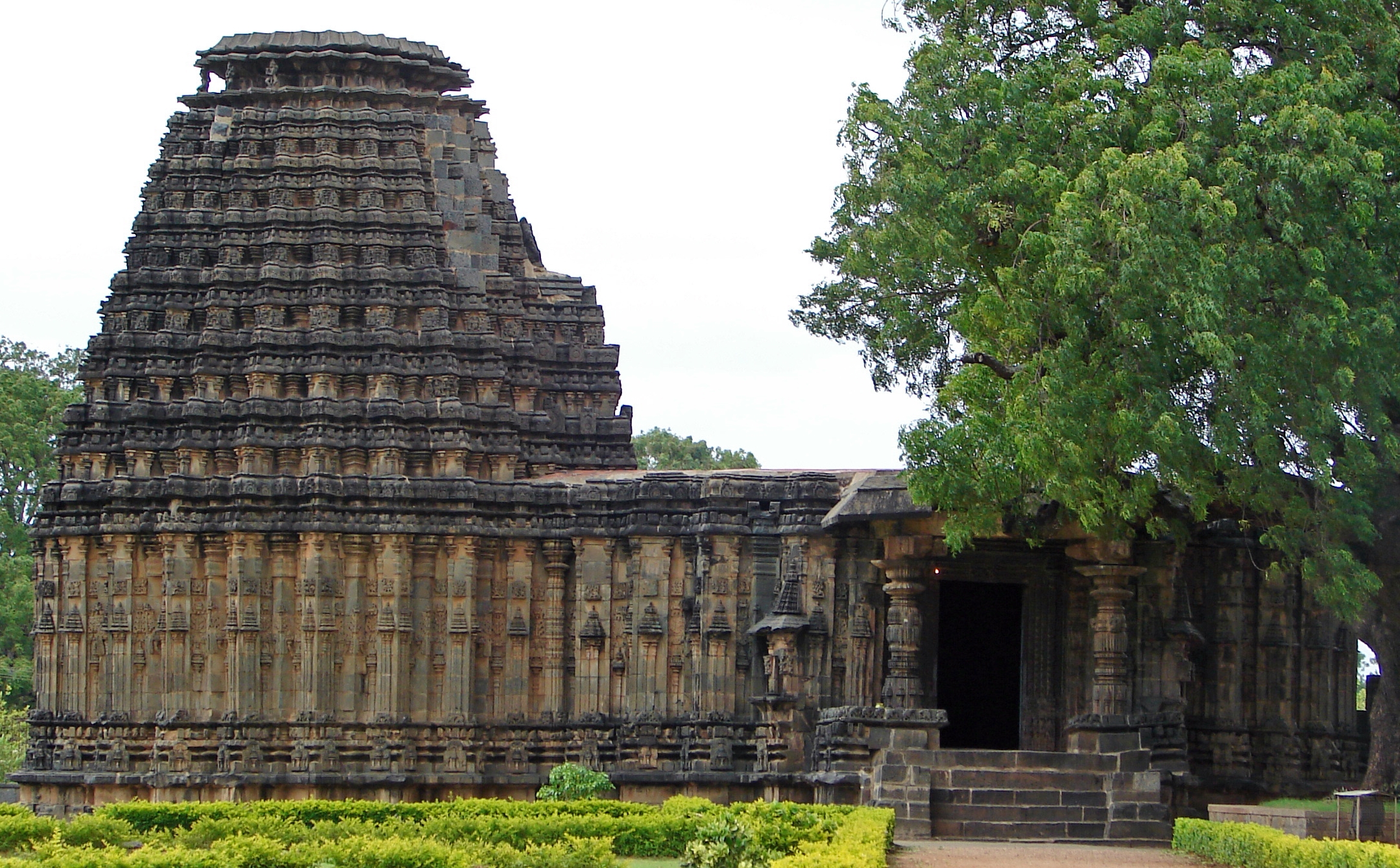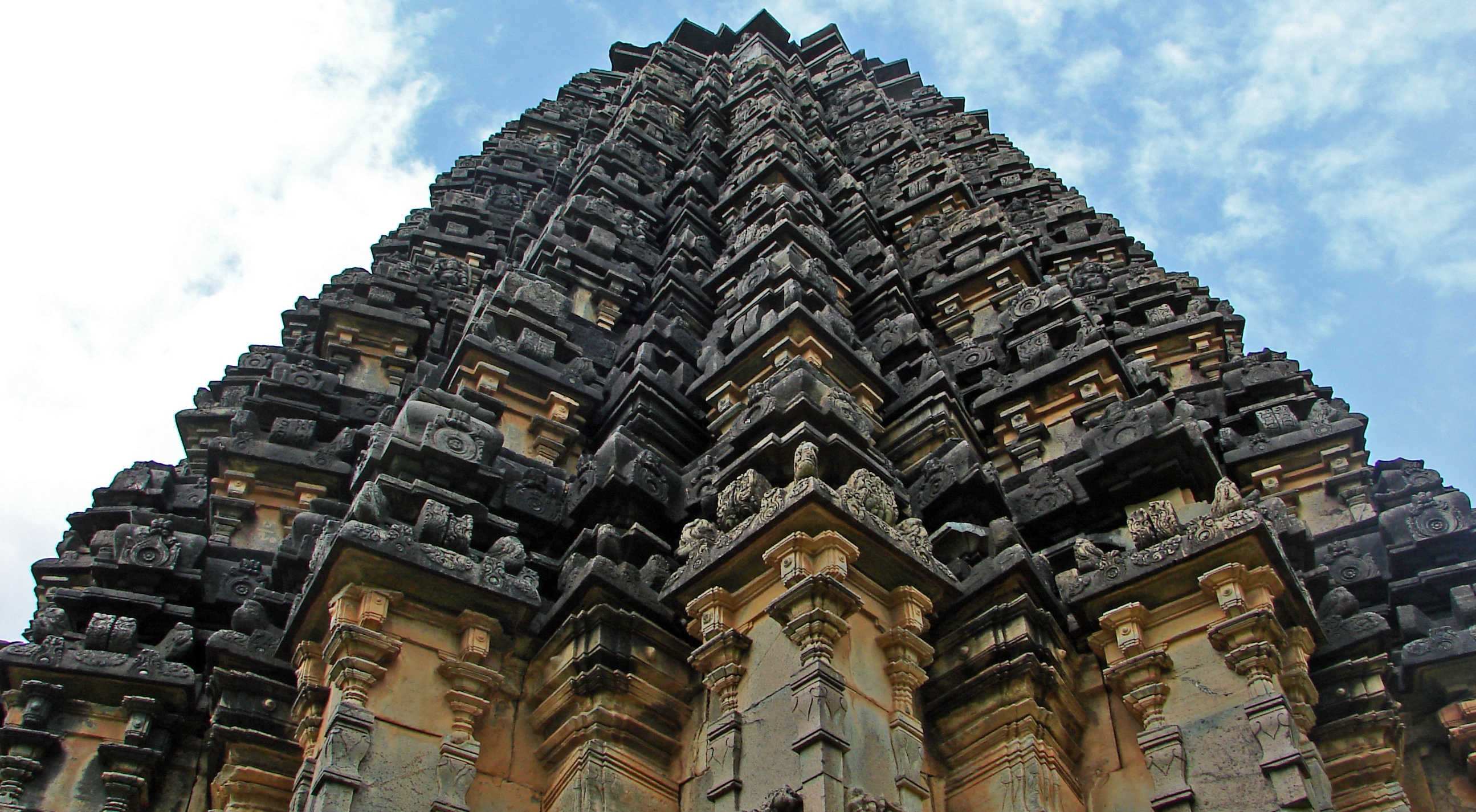Dodda Basappa Temple on:
[Wikipedia]
[Google]
[Amazon]
 Doddabasappa Temple () is a 12th-century Western Chalukyan architectural innovation in Dambal,
Doddabasappa Temple () is a 12th-century Western Chalukyan architectural innovation in Dambal,


 The Doddabasappa temple marks the mature development of the Chalukyan art which originated from basic ''dravida'' architecture of South India. Its departure from conventional ''dravida'' plan used in the Virupaksha temple in
The Doddabasappa temple marks the mature development of the Chalukyan art which originated from basic ''dravida'' architecture of South India. Its departure from conventional ''dravida'' plan used in the Virupaksha temple in
Dambal
Karnataka
Karnataka (; ISO 15919, ISO: , , also known as Karunāḍu) is a States and union territories of India, state in the southwestern region of India. It was Unification of Karnataka, formed on 1 November 1956, with the passage of the States Reor ...
state, India
India, officially the Republic of India (Hindi: ), is a country in South Asia. It is the List of countries and dependencies by area, seventh-largest country by area, the List of countries and dependencies by population, second-most populous ...
. Dambal is about southeast of Gadag
Gadag-Betageri is a city municipal council in Gadag district in the state of Karnataka, India. It is the administrative headquarters of Gadag District. The original city of Gadag and its sister city Betageri (or ''Betgeri'') have a combined cit ...
city and southwest of Ittagi in Koppal
''Koppal'' is a district headquarters of Koppal district in the Indian state of Karnataka. Koppal is surrounded on three sides by hills. It was known as Kopana Nagara. The town has historical landmarks such as the Koppal Fort, Gavimath (a ...
district.Cousens (1926), p. 114 The sanctum contains a Shiva ''linga
A lingam ( sa, लिङ्ग , lit. "sign, symbol or mark"), sometimes referred to as linga or Shiva linga, is an abstract or aniconic representation of the Hindu god Shiva in Shaivism. It is typically the primary ''murti'' or devotional ...
'', the symbol of the presiding deity, God Shiva. The temple interior is a standard construction and consists of a sanctum (cella), a vestibule (''antarala'') and a main ''mantapa
A mandapa or mantapa () is a pillared hall or pavilion for public rituals in Indian architecture, especially featured in Hindu temple architecture.
Mandapas are described as "open" or "closed" depending on whether they have walls. In temples, ...
'' (also called ''navaranga'' or hall). The vestibule connects the sanctum to the ''mantapa''. The Western Chalukya monuments, regional variants of existing dravida (South Indian) temples, defined the Karnata dravida architectural tradition.Hardy (1995), pp. 6–7
Temple plan

Stellate plan
The temple is based on a very original 24-pointed uninterruptedstellate
Stellate, meaning star-shaped, may refer to:
* Stellate cell
* Stellate ganglion
* Stellate reticulum
* Stellate veins
* Stellate trichomes (hairs) on plants
* Stellate laceration or incision Wound#Open
* Stellate fan-shaped Espalier (one form ...
(star-shaped) plan and uses soapstone
Soapstone (also known as steatite or soaprock) is a talc-schist, which is a type of metamorphic rock. It is composed largely of the magnesium rich mineral talc. It is produced by dynamothermal metamorphism and metasomatism, which occur in the ...
as its basic building material. Contemporary stellate plans of the Bhumija
Bhumija is a variety of north Indian temple architecture marked by how the rotating square-circle principle is applied to construct the ''shikhara'' (superstructure or spire) on top of the sanctum. Invented about the 10th-century in the Malwa reg ...
shrines in central India where the inspiration for this temple came from, were all 32-pointed interrupted types. No temples of the 6-, 12-, or 24-pointed stellate plans are known to exist in Karnataka
Karnataka (; ISO 15919, ISO: , , also known as Karunāḍu) is a States and union territories of India, state in the southwestern region of India. It was Unification of Karnataka, formed on 1 November 1956, with the passage of the States Reor ...
or Maharashtra
Maharashtra (; , abbr. MH or Maha) is a state in the western peninsular region of India occupying a substantial portion of the Deccan Plateau. Maharashtra is the second-most populous state in India and the second-most populous country subdi ...
, with the exception of the Doddabasappa temple, which can be described as a 24-pointed uninterrupted plan.Foekema (2003), p. 60 In an 'interrupted' stellate plan, the stellate outline is interrupted by orthogonal
In mathematics, orthogonality is the generalization of the geometric notion of '' perpendicularity''.
By extension, orthogonality is also used to refer to the separation of specific features of a system. The term also has specialized meanings in ...
(right-angle) projections in the cardinal direction
The four cardinal directions, or cardinal points, are the four main compass directions: north, east, south, and west, commonly denoted by their initials N, E, S, and W respectively. Relative to north, the directions east, south, and west are ...
s, resulting in star points that have been skipped.Foekema (2003), p. 63
 The Doddabasappa temple marks the mature development of the Chalukyan art which originated from basic ''dravida'' architecture of South India. Its departure from conventional ''dravida'' plan used in the Virupaksha temple in
The Doddabasappa temple marks the mature development of the Chalukyan art which originated from basic ''dravida'' architecture of South India. Its departure from conventional ''dravida'' plan used in the Virupaksha temple in Pattadakal
Pattadakal, also called Paṭṭadakallu or Raktapura, is a complex of 7th and 8th century CE Hindu and Jain temples in northern Karnataka (India). Located on the west bank of the Malaprabha River in Bagalakote district, this UNESCO World ...
is so extreme that it would be very difficult to find similarities without detailed examination. A star shape is obtained by rotating a square about its centre. The star points form equidistant projections. The angles and re-entrant angles thus formed make the perimeter of the outerwall of the shrine.
The star projections are carried right up the superstructure (tower over the shrine — ''Shikhara
''Shikhara'' ( IAST: '), a Sanskrit word translating literally to "mountain peak", refers to the rising tower in the Hindu temple architecture of North India, and also often used in Jain temples. A ''shikhara'' over the ''garbhagriha'' chambe ...
''), giving it an exotic look, though it loses strength in comparison to the square superstructures found in conventional ''dravida'' plans. The storied arrangement of the superstructure found in ''dravida'' plans is not easily distinguishable here.Cousens (1926), p. 115 The upper tiers of the seven-tiered (''tala'') superstructure look like cogged wheels with 48 dents.Foekema (2003), p. 61
Other details
The pillars in this temple are finely chiseled and "complicated" but lack the elegance of those at the Kasivisvesvara Temple inLakkundi
Lakkundi, also referred to as Lokkugundi, was a major city prior to the 14th-century, and is now a village in Gadag District of Karnataka, India. By 10th-century, it was already a major economic and commerce center with mint operations for South ...
. The entrance to the shrine has above it a decorative architrave
In classical architecture, an architrave (; from it, architrave "chief beam", also called an epistyle; from Greek ἐπίστυλον ''epistylon'' "door frame") is the lintel or beam that rests on the capitals of columns.
The term can a ...
with space for images (now missing) of the Hindu
Hindus (; ) are people who religiously adhere to Hinduism. Jeffery D. Long (2007), A Vision for Hinduism, IB Tauris, , pages 35–37 Historically, the term has also been used as a geographical, cultural, and later religious identifier for ...
Gods Brahma
Brahma ( sa, ब्रह्मा, Brahmā) is a Hindu god, referred to as "the Creator" within the Trimurti, the trinity of supreme divinity that includes Vishnu, and Shiva.Jan Gonda (1969)The Hindu Trinity Anthropos, Bd 63/64, H 1/2, pp ...
, Vishnu
Vishnu ( ; , ), also known as Narayana and Hari, is one of the principal deities of Hinduism. He is the supreme being within Vaishnavism, one of the major traditions within contemporary Hinduism.
Vishnu is known as "The Preserver" withi ...
and Shiva
Shiva (; sa, शिव, lit=The Auspicious One, Śiva ), also known as Mahadeva (; Help:IPA/Sanskrit, ɐɦaːd̪eːʋɐ, or Hara, is one of the Hindu deities, principal deities of Hinduism. He is the Supreme Being in Shaivism, one o ...
. Depending on the dedication of the temple, either Vishnu or Shiva would take the central position in this arrangement. The entrance to the sanctum is elaborately decorated on either side with designs that are floral containing tiny images of dancers, musicians and even a mithuna couple ( Gemini). In the main mantapa
A mandapa or mantapa () is a pillared hall or pavilion for public rituals in Indian architecture, especially featured in Hindu temple architecture.
Mandapas are described as "open" or "closed" depending on whether they have walls. In temples, ...
(hall) there are three images, one of the "five headed" Brahma and his vehicle (''vahana
''Vahana'' ( sa, वाहन, or animal vehicle, literally "that which carries, that which pulls") denotes the being, typically an animal or mythical, a particular Hindu God is said to use as a vehicle. In this capacity, the vahana is often ...
''), the goose, and two images are of Surya
Surya (; sa, सूर्य, ) is the sun as well as the solar deity in Hinduism. He is traditionally one of the major five deities in the Smarta tradition, all of whom are considered as equivalent deities in the Panchayatana puja and a ...
, the Sun God.
The temple has two doorways each with a porch, one facing south and the other facing east. The east facing door has on either side the remains of what must have been elegant lintel
A lintel or lintol is a type of beam (a horizontal structural element) that spans openings such as portals, doors, windows and fireplaces. It can be a decorative architectural element, or a combined ornamented structural item. In the case of ...
decoration, and an open hall type of pillared extension containing a large recumbent image of Nandi
Nandi may refer to:
People
* Nandy (surname), Indian surname
* Nandi (mother of Shaka) (1760–1827), daughter of Bhebe of the Langeni tribe
* Onandi Lowe (born 1974), Jamaican footballer nicknamed Nandi
* Nandi Bushell (born 2010), South Afric ...
(bull) which faces the shrine.
Notes
External links
Dambal
References
* * * {{Hindu temples in Karnataka 12th-century Hindu temples Hindu temples in Gadag district Chalukya dynasty Western Chalukya Empire 12th-century establishments in India